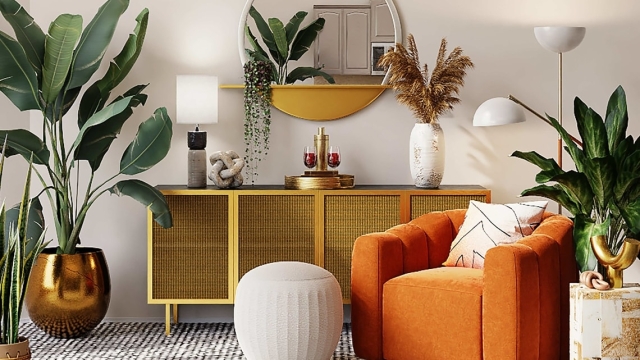
Your home is a reflection of who you are, a canvas on which your personality, taste, and lifestyle entwine. The art of home furnishing can transform an ordinary space into a sanctuary that feels uniquely yours. Whether you are starting from scratch in a new place or looking to refresh your long-standing residence, understanding the basics of home furnishing will simplify the process and ignite your creativity.
Choosing the right furnishings involves much more than picking out a few pieces of furniture. It’s about creating an ambiance that resonates with your emotions, preferences, and overall vision for your space. From selecting colors and textures to arranging items in a way that promotes flow and functionality, thoughtful home furnishing can elevate your living experience. In this guide, we will explore practical tips and inspiring ideas to help you easily navigate the world of home furnishing, ensuring you can create a space you love coming back to.
Kitchen Cabinet
Choosing the Right Style
The first step in home furnishing is identifying your personal style. Consider what resonates with you when you walk into a room. Is it the sleek lines of modern design, the cozy feel of rustic charm, or the elegance of traditional decor? Understanding your preferences will guide your choices and help create a cohesive look throughout your space. Take inspiration from magazines, online platforms, or even your favorite travels to see what appeals to you.
Once you have a sense of your style, assess the existing elements in your home. The architecture, lighting, and layout will all influence your furnishings. For instance, a contemporary space may not suit overly ornate furniture, whereas a historic home might look stunning with vintage pieces. It’s essential to ensure that the style of your furnishings complements your home’s character, creating harmony rather than conflict.
Finally, consider the function of each space you are furnishing. Different rooms serve different purposes, and the style you choose should reflect that. A vibrant and playful design may work wonders in a child’s playroom, while a serene and calming atmosphere is ideal for a bedroom. Balancing aesthetics with practicality will not only enhance your living environment but also ensure that it meets the needs of your lifestyle.
Maximizing Space and Functionality
When it comes to home furnishing, the key to creating an inviting and practical environment lies in maximizing the available space and functionality. Start by assessing the layout of each room and identifying areas that can be optimized. Consider multi-functional furniture, such as sofa beds, storage ottomans, and extendable dining tables. These pieces not only save space but also adapt to your changing needs, making your home more versatile for entertaining or relaxing.
Another important aspect is to arrange furniture in a way that promotes flow and accessibility. Ensure that pathways are clear and that you can navigate each room comfortably. Use rugs to define different areas within an open space, and position furniture to create conversational zones without hindering movement. This thoughtful arrangement not only enhances functionality but also creates a sense of balance and harmony in your home.
Finally, utilize vertical space to maximize storage and reduce clutter. Tall bookshelves, wall-mounted shelves, and hanging organizers can help you keep items organized without overwhelming the floor space. When choosing furniture, look for pieces that offer built-in storage solutions. By being strategic about your furnishings and their placement, you can transform even the coziest spaces into functional areas that meet your lifestyle needs.
Color and Texture Considerations
Choosing the right color palette is fundamental in home furnishing. Colors can significantly influence the mood and atmosphere of a space. Warm tones like red, yellow, and orange can create a cozy and inviting environment, while cool colors such as blue, green, and gray can promote calmness and relaxation. It’s essential to consider the size and lighting of your room as well; lighter colors can make a small space feel larger, while darker shades can add depth and a sense of intimacy.
Texture plays a vital role in home furnishing, adding depth and interest to your interiors. Combining various textures, such as soft fabrics, smooth surfaces, and rough materials, can create a dynamic and engaging environment. For instance, pairing a plush velvet sofa with a sleek glass coffee table not only enhances visual appeal but also invites tactile interaction. Incorporating woven elements, like rugs and throws, can further enrich the sensory experience and create a warm, layered look.
When selecting colors and textures, it’s crucial to consider the overall theme of your space. Whether you lean towards a modern, minimalist style or a more eclectic design, ensure that your choices complement each other. A cohesive look can be achieved by sticking to a defined color palette and harmonizing textures throughout your furnishings. This will help create a balanced and inviting atmosphere that reflects your personal style while being functional and aesthetically pleasing.
Accessorizing for a Personal Touch
Accessorizing your space is essential in reflecting your personality and style. Items such as throw pillows, artwork, and decorative objects can create unique focal points that invite conversation. Consider fabric patterns and colors that resonate with your theme, whether it’s cozy and warm or sleek and modern. Remember, every accessory serves a purpose, so choose pieces that not only enhance aesthetics but also bring joy.
Plants are another fantastic way to infuse life into your home. Incorporating greenery adds vibrancy and freshness, breaking the monotony of static furnishings. Select varieties that complement your space, from small succulents on a desk to tall potted plants in corners. It’s important to choose low-maintenance options if you don’t have a green thumb, ensuring your decor remains effortless and inviting.
Lastly, don’t underestimate the power of personal memorabilia. Incorporate photographs, travel souvenirs, or handmade crafts into your decor. These items tell your story and create an inviting atmosphere. Layering these personal touches with your main furnishings will not only make your space uniquely yours but also create emotional connections that make your house feel like home.


